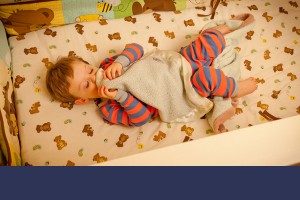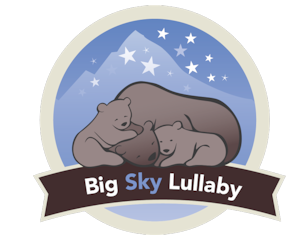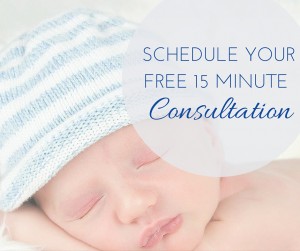 Napping is a source of frustration and anxiety for many parents. Fortunately, with the proper sleep training naptime can be a truly peaceful, restful time for both the child and parents. There are three main factors that influence a good nap. Understanding these three factors is the first step to creating a happy napper.
Napping is a source of frustration and anxiety for many parents. Fortunately, with the proper sleep training naptime can be a truly peaceful, restful time for both the child and parents. There are three main factors that influence a good nap. Understanding these three factors is the first step to creating a happy napper.
Three Steps To Creating A Happy Napper
#1: Know age appropriate wake times
It is important that wake times are kept appropriate for the child’s age. If a child is kept awake too long, they reach the overtired state, which then makes it even harder for them to fall asleep. Here are the general guidelines I provide my clients:
- A newborn can only handle a one-hour wake period. This means that as soon as they wake you will feed them, go straight to tummy time/playtime, and then begin your soothing routine 15 minutes prior to the one-hour mark.
- A 4-month old can only handle a maximum of 2 hours of wake time.
- Once they reach 6 months, they are able to tolerate about 2.5 hours of awake time.
- At 18 months they can typically stay awake between six and seven hours.
#2: Understand your child’s biological sleep wave
Although considering how long your child has been awake is very important, so is knowing when their biological sleep wave will occur. Babies have natural rhythms that send signals to their brains to either be awake or asleep. Putting your child down at a time that does not coincide with their sleep wave is going against what their brain is telling them to do. Not only will it be a battle trying to get them to sleep, the sleep will not be as restorative and you will most likely have a cranky child on your hands when they wake from their nap.
You can look for signs that your child is starting to get tired, or sleepy cues, this will tell you when they are entering their biological sleep wave. Once they get into the overtired state they have missed their sleep wave. Parents often confuse sleepy cues and overtired signs (see examples of both), so it is important to observe your child closely so you can start to differentiate the two and know the time frame for when they usually occur.
#3: Have your child fall asleep independently without “props”
The third factor is easier said than done, but once your child has mastered falling asleep without help, they will be able to do so around the clock.
A sleep prop can be anything from nursing to sleep, rocking to sleep, using motion sleep (car ride, stroller, or a swing), or laying with your child until they fall asleep. When a parent resorts to one of these methods to get their child to sleep it might work initially, but as soon as the baby goes from one sleep phase to the next they will wake. Each time they wake, they will think that the strategy that got them to sleep in the first place must be repeated in order for them to fall back asleep. This is simply because they have not learned otherwise.
Items such as a pacifier, lovey, and stuffed animals are considered “comfort items” and not props. Comfort items are a great way to help your child fall asleep on their own. Make sure you are familiarizing your child with these items during their bedtime/naptime routine. When you go into their room to check on them, always place the item back in their hand and remind them that it is there.
Mastering naptime is an educational process for both baby and parents, but once you get the basics down it can make naps much easier and more enjoyable for everyone involved.
Conclusion: Creating a Happy Napper
We hope you have enjoyed this article and the tips help in your journey to creating a “happy napper”!
If you ever have questions or could use some help from a professional child sleep consultant, please schedule your free consultation. We would love to help!

